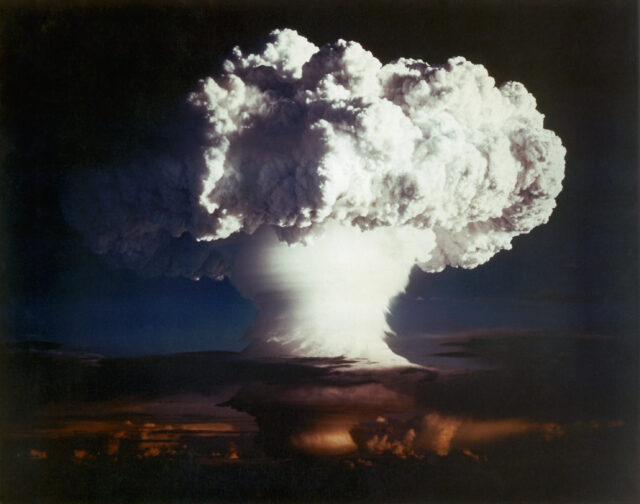November 1st, 1952: The First Large Hydrogen Bomb is Dropped by the US

On November 1, 1952, the United States took a major step in nuclear weapons development by successfully testing its first hydrogen bomb, codenamed Mike. This powerful bomb was detonated as part of Operation Ivy on Eniwetok Atoll in the Marshall Islands. The test marked the first time a hydrogen bomb, which uses nuclear fusion, had been tested on such a large scale, ushering in a new era of nuclear weaponry.

The hydrogen bomb, or thermonuclear bomb, was much more powerful than the atomic bombs used during World War II. While atomic bombs rely on nuclear fission—splitting atoms to release energy—hydrogen bombs use fusion, which fuses atomic nuclei together to generate even more destructive force. The Mike bomb was designed to test this new technology, and it delivered a staggering explosion equivalent to 10.4 megatons of TNT, which was about 500 times more powerful than the bomb dropped on Nagasaki in 1945.
When the bomb detonated, it completely obliterated Elugelab Island, leaving behind a massive crater over 1.5 miles wide and around 164 feet deep. The force of the explosion was so great that it vaporized the island, and the radioactive fallout spread over a wide area, raising environmental concerns. The test sent shockwaves around the world, as the destructive potential of hydrogen bombs became a reality.
The success of the Mike test happened during the height of the Cold War, an era marked by tension and rivalry between the United States and the Soviet Union. The test gave the U.S. a temporary lead in the nuclear arms race, but it also deepened global fears of a potential nuclear conflict. Soon after, the Soviet Union began testing its own hydrogen bombs, further escalating the competition between the superpowers.
This day in history remains a reminder of the dangerous power humanity has unlocked with nuclear technology. The first test of a large hydrogen bomb set the stage for decades of nuclear arms buildup and discussions around disarmament that continue to shape international relations today.
